CAR & ROAD SAFETY
Teen Driving
 The sense of freedom a teen gets from being behind the wheel is undeniable. However, motor vehicle crashes are the second leading cause of death for US teens. Almost 2,500 teens between the ages of 13-19 lost their lives in car crashes in 2018 -which averages out to about seven teens a day.
The sense of freedom a teen gets from being behind the wheel is undeniable. However, motor vehicle crashes are the second leading cause of death for US teens. Almost 2,500 teens between the ages of 13-19 lost their lives in car crashes in 2018 -which averages out to about seven teens a day.
Risk factors that make teens more vulnerable when driving include inexperience, driving with teen passengers, nighttime driving, distracted driving, not using seat belts, drowsy driving, reckless driving (including speeding), and impaired driving.
Few teens and preteens ever think about the rules of the road or how to drive safely until they are just about to start driving. Here are a few ways to provide teens and preteens with the tools and support they need to make responsible choices.
Safety Tips
For Teens:
- Buckle up, every time.
- Don’t drink and drive or use drugs.
- Limit the number of passengers or ban non-family passengers.
- Don’t text and drive or use any handheld electronics.
- Follow the rules of the road.
- Avoid driving at night or in hazardous conditions until experienced.
- Implement a formal agreement on safe driving rules.
- Ride along with your teen for at least 30-50 hours. Teens lack driving experience, so the more they practice, the better they will get.
- Pay attention while your teen is driving, and make suggestions for any improvements they can make.
- Practice with your teen at different times of the day, different kinds of weather, and in different kinds of traffic patterns.
- Restrict nighttime driving for the first six months your teen has a license.
- Restrict passengers for the first six months your teen has a license.
- Make sure your teen knows your rules and expectations around their driving by having conversations with them. Be sure to adjust your rules and expectations as their driving experiences increase.
- Require seat belts to be used on every trip.
- Model the behaviors you want to see in your teen!





